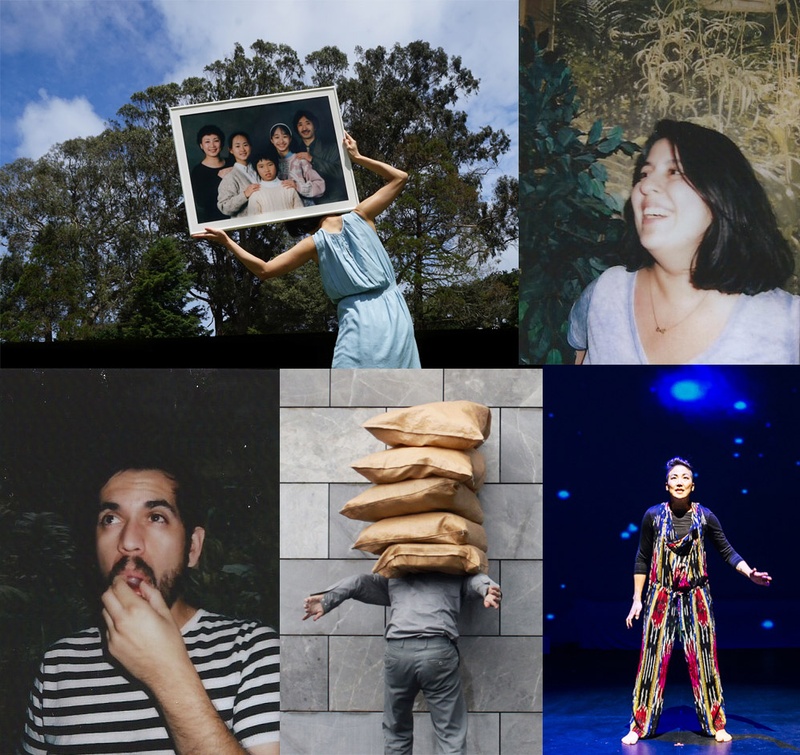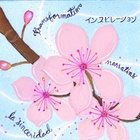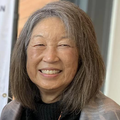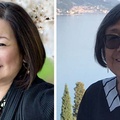For this month’s column, I thought it would be a good time to feature the other artists in a residency we are sharing this summer in Little Tokyo (the +LAB Artists-in-Residence program, where five of us are here for three months working on various arts and community engagement projects in partnership with Little Tokyo Service Center, Japanese American Cultural & Community Center, Sustainable Little Tokyo, Visual Communications and the Japanese American National Museum). We ended up going through an experiment together. After two weeks of intense orientation around the Residency theme of “cycles of displacement” - what would come, poetically speaking, of a writing process we could engage in together, within two hours time?
After sharing time in group exercises to open our creative flow, we wrote a set of stanzas into a collective piece centering on process - a set of instructions, so to speak, related to creative form, artistic process, and social & communal process. We also include here, a set of five linked poems, inspired by our various practices of Renshi, linked, and collective rotational poems in our work. For those curious to the various voices contributing each line/stanza, we included the initials of each artist with each stanza or order of artists at the end of each Renshi. Read below for bios on Cognate Collective (Amy Sanchez Arteaga and Misael Diaz), Marina Fukushima, and Isak Immanuel. Enjoy...
—traci kato-kiriyama
* * * * *
Place/Displace: a five-person experiment in poetics
(On Process)
form a circle, take a collective breath,
make eye contact between each body, take time, it can be done
listen to the center and see where it moves,
make sure everyone is reached
(t)
Sometimes absence looks like a page filled with empty words.
Where is the hurt? What does the wound look like? What salve will soothe?
John said: Make a movement that makes you feel good. Do it until you do.
Think of a sound that soothes you. Listen until it does.
(a)
trust the process, come out and play
understand every game is an opportunity
every opportunity an action
every action an exercise
in listening
(t)
Prepare the space, make room for a voice to fill it.
Position yourself at close enough proximity to listen.
Be mindful of the way the voice filters through --
through the space, through the wires, through you.
What can you hear bleeding through?
(md)
open hand across chest, from left shoulder to right:
begin to awaken the fire
(t)
Holding the breath gently
waiting for the rising force to release
dialogue inside and outside of a small container
(mf)
consideration of character arc:
how do we each change in relation to one another?
(t)
Sharing absence
after an idea of community
looking across borders
stand on a bridge
sleep under the bridge
with a long string
walking further and further
away and backwards
(ii)
Washing your dirty feet
feel the sensation of clean feet
search where the dirt goes
(mf)
Stumbling on a bridge
without sleep under a bridge
hanging off the side of a bridge
into night years
traveling between
without a body
someone not here
walking, standing, sleeping
closely by your side
(ii)
* * * * *
Renshi (連詩):
BOUNDARY
In the space where I end and you begin
Rain fall and wet the edge of my ending and your beginning
Let this be modular, centering the overlap
Breathing a landscape of not myself, everyday being born between
us, we, you, me.
(md; mf; t; ii; a)
CLOUDS
I tried to hold a cloud, but my grip wasn’t gentle enough.
It slipped through my fingers, leaving behind
being still soft and gentle
a residue, of wanting
Clouds holding bodies of water, societies of rain.
(a; md; mf; t; ii)
ERASURE
How to erase where there is no word, no voice, no memory?
How to insert memory where there are no bones?
Without a body, how to be a good listener?
With you.
Together, we remain, to call this _____ space our own.
(mf; t; ii; a; md)
MAP
Circling a place, falling into water
Knowing that I cannot drown in a history that is my own.
I swim to the edge, emerge, and sit on the bank, my body soaked in the past
Moisture of my body, tear from my eyes, can they join another river?
Circling into place, falling into ourselves
(ii; a; md; mf; t)
ECHO
A conversation between glass and brick
An audience of dust floats between
Suspended in a cycle of remembrance and forgetting
To ensure its passage through time and space, the voice enlists accomplices
To be continued...
(t; ii; a; md; mf)
© 2019 Amy Sanchez Arteaga; Misael Diaz; Marina Fukushima;Isak Immanuel; traci kato-kiriyama;











